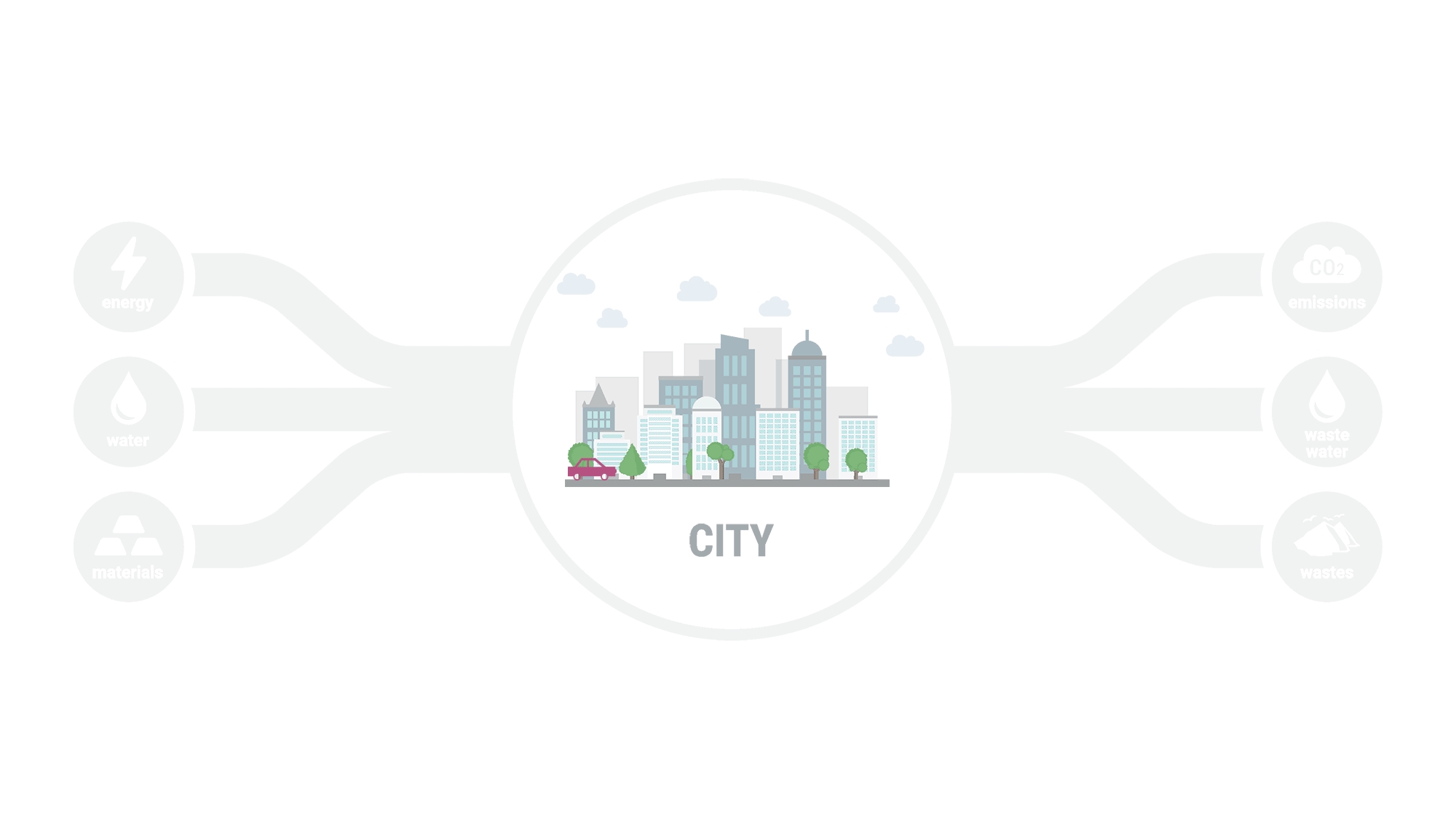🥝Material Flow Analysis
Understand your city's energy, materials and goods consumption patterns
What is it about and why is it relevant ?
Material Flow Analysis (MFA) is a method to quantify the inputs and outputs of physical or non-physical resources (energy, materials, goods) that flow through a predefined system (here - a city). MFAs are used to understand a city's consumption of different types of materials from a higher level, as well as the types of waste it is generating.
MFA is a method tightly connected to the concept of ‘urban metabolism’, which seeks to understand the city and its surrounding region through the lens of biological systems, and technical processes. In biology, the synthesis of proteins is considered a constructive metabolic process. In urban sciences, city dynamics are defined by the flow of materials, information, and the distribution of activities, making it the most complex system ever created by humans. Under the current urban paradigm, cities consume more resources than they produce. They synthesise energy, food and materials in a way that degrades, discards, or pollutes the environment. However, over the past decades, the digital revolution in computing has profoundly affected logistics, trade, and international communications; opening up new urban dynamic flows and deeply changing the current unsustainable industrial paradigm. Along with MFA, there are many other data-driven tools and methods that accelerate and foster new solutions for circular cities.
In CENTRINNO, MFA may have different uses. Identified waste resources could be used for fabrication and productive activities in Fab City Hubs, fostering new circular solutions, products and services. MFA could be used to map materials and resources that could be included in the CENTRINNO Cartography. Outcomes of MFA may highlight gaps, materials or potential activities around which communities of interest could be built. To read more about the potential roles of MFA in CENTRINNO, have a look at the Urban Ecosystem Mapping Guidebook:
Summary Table
Characteristics | |
Purpose | Quantify resource inputs and outputs |
Difficulty | Difficult |
Duration | n.a. |
Facilitator | Participants | n.a. |
CENTRINNO key concepts | Circular Economy |
Setting | Offline & online |
Contact | |
Tags | #VSION, #ciruclarity |
Last updated
